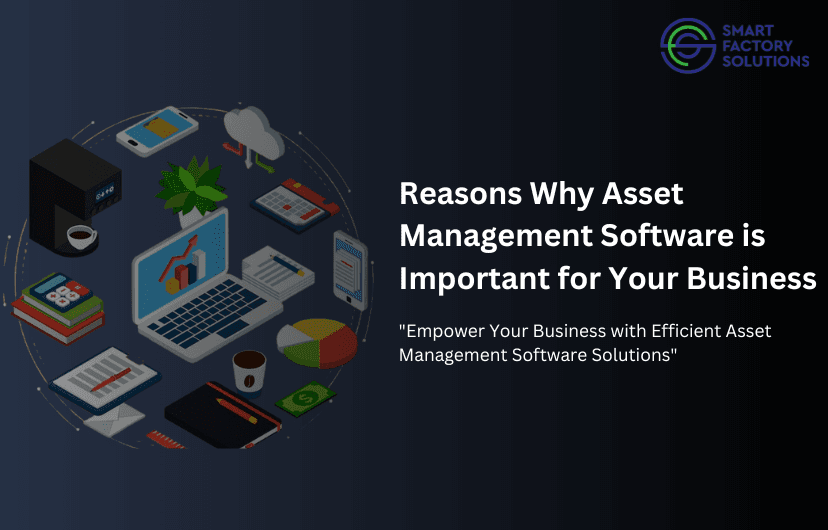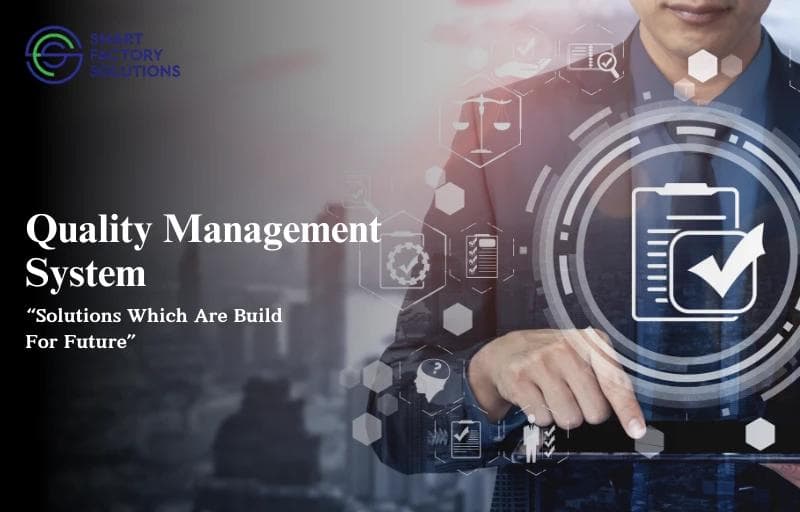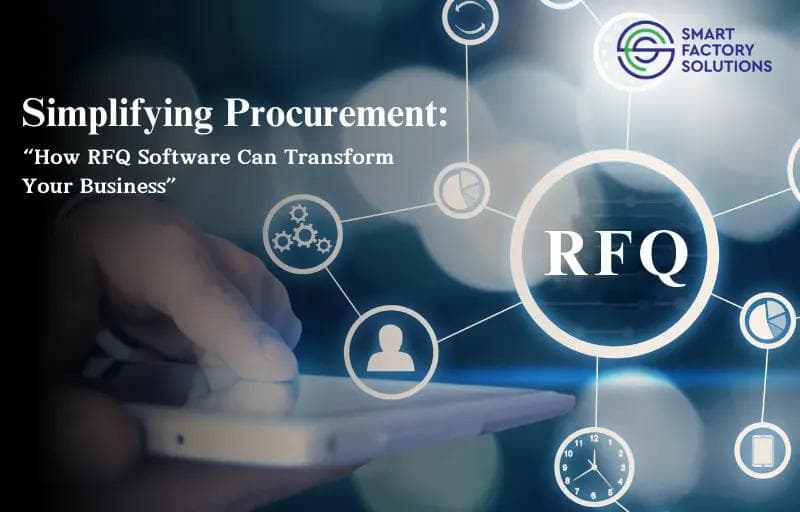Back
Reasons Why Asset Management Software is Important for Your Business?

What Do You Understand by Asset Management?
Asset management involves tracking and maintaining a company's assets to get the most value from them. These assets can include machinery, equipment, buildings, and even intellectual property. Effective asset management means keeping assets in good condition, using them efficiently, and replacing them when necessary to boost productivity and profitability.
Key Components of Asset Management:
- Inventory Tracking: Keeping detailed records of all assets, their locations, and statuses.
- Maintenance Management: Scheduling and documenting regular maintenance to prolong asset lifespan.
- Utilization Optimization: Ensuring that assets are used to their full potential and not underutilized.
- Lifecycle Management: Managing assets from acquisition through disposal.
- Regulatory Compliance: Ensuring that asset management practices comply with industry regulations.
Why Does Your Company Need an Asset Management System?
Implementing an asset management system is essential for modern businesses to maintain efficiency and competitiveness. Here are key reasons why your company needs such a system:
1. Efficient Resource Allocation: An asset management system provides real-time data on the location, status, and condition of assets, ensuring that resources are allocated effectively. This minimizes redundancy and ensures that assets are available when and where they are needed.
2. Accurate Inventory Management: Maintaining an accurate inventory manually can be time-consuming and prone to errors. An asset management system automates inventory tracking, preventing losses due to theft or misplacement and ensuring that inventory levels are always optimal.
3. Maintenance Management: Regular maintenance is crucial for extending the lifespan of assets. An asset management system schedules and tracks maintenance activities, ensuring timely servicing and reducing the risk of unexpected breakdowns and costly repairs.
4. Cost Savings: By optimizing asset utilization and maintenance, an asset management system can lead to significant cost savings. It helps identify underutilized or redundant assets, reducing the need for unnecessary purchases and lowering operational costs.
5. Regulatory Compliance: Many industries are subject to stringent regulatory requirements regarding asset management. An asset management system helps ensure compliance by maintaining accurate records and generating necessary reports, thereby reducing the risk of non-compliance penalties.
6. Enhanced Security: Even without geofencing or live tracking, an asset management system can enhance security by keeping detailed records of asset movements and providing alerts for any unauthorized actions. This reduces the risk of theft and ensures that assets are used appropriately.
7. Improved Decision Making: Access to detailed data and analytics on asset performance and utilization supports informed decision-making regarding asset purchases, disposals, and allocations. This data-driven approach leads to better strategic planning and resource management.
8. Warranty Management: Tracking warranties for various assets can be challenging. An asset management system stores and manages warranty information, ensuring that companies take full advantage of warranties and avoid unnecessary repair costs by staying within warranty periods.
9. Repair and Maintenance History: Keeping track of the repair and maintenance history of assets helps identify patterns and predict future maintenance needs. This proactive approach minimizes downtime, extends asset lifespans, and aids in making informed decisions about asset repairs and replacements.
What Are the Benefits of Using Asset Management Software?
Asset management software offers a range of benefits that help businesses optimize their operations and achieve their goals more efficiently:
1. Real-Time Asset Tracking: Asset management software provides real-time updates on asset locations and conditions, improving visibility and control over the company's assets. This ensures that assets are always accounted for and in the right condition.
2. Increased Efficiency: Automating asset management processes reduces manual effort and errors, freeing up resources for other tasks and increasing overall efficiency. This streamlined approach ensures that asset management activities are carried out swiftly and accurately.
3. Cost Savings: Minimizing losses due to theft or misplacement and optimizing asset utilization leads to significant cost savings. Asset management software helps identify underutilized or redundant assets, reducing unnecessary expenditures and improving the bottom line.
4. Enhanced Maintenance Management: Scheduling regular maintenance and tracking service histories prevent unexpected failures and extend asset lifespans. Asset management software ensures that all maintenance activities are documented and easily accessible, promoting proactive maintenance practices.
5. Regulatory Compliance: Asset management software helps companies meet industry regulations by maintaining accurate records and providing necessary documentation, reducing the risk of non-compliance penalties. This is especially important for industries with stringent regulatory requirements.
6. Better Asset Utilization: The software ensures that assets are used to their full potential, improving return on investment. By analyzing asset performance data, businesses can make informed decisions about asset allocation and utilization.
7. Data-Driven Decisions: Detailed analytics and reports support informed decision-making regarding asset management strategies. Companies can use this data to plan asset purchases, disposals, and allocations more effectively, leading to better strategic planning.
8. Improved Customer Service: Ensuring that customer-facing assets are well-maintained and available enhances service quality and customer satisfaction. Reliable asset management leads to better customer experiences and long-term business relationships.
9. Warranty and Repair History Management: The software can store and manage warranty information and track the repair and maintenance history of assets. This ensures that companies take full advantage of warranties and maintain assets efficiently, reducing repair costs and downtime.
What is SmartALM & How Can it Add Value to Your Business?
SmartALM is a comprehensive asset management software solution designed to help businesses efficiently manage their assets throughout their lifecycle. It offers a range of features tailored to the specific needs of companies, including barcode scanning, warranty management, repair history tracking, and maintenance history management. Here’s how SmartALM can add value to your business:
1. Centralized Asset Management: SmartALM provides a centralized platform to manage all assets, improving visibility and control. It allows businesses to track and manage assets from acquisition to disposal, ensuring that all asset information is stored in one place.
2. Barcode Scanning: The software includes barcode scanning capabilities, making it easy to track and manage assets. By scanning barcodes, companies can quickly update asset information, check asset status, and verify asset locations, streamlining inventory management processes.
3. Warranty Management: SmartALM helps businesses keep track of warranties for all assets. It stores warranty information and sends notifications when warranties are about to expire, ensuring that companies take full advantage of warranty benefits and avoid unnecessary repair costs.
4. Repair History Tracking: The software tracks the repair history of each asset, providing detailed records of all maintenance and repair activities. This information helps identify recurring issues, predict future maintenance needs, and make informed decisions about asset repairs and replacements.
5. Maintenance History Management: SmartALM schedules and tracks maintenance activities, ensuring that all assets are serviced regularly. By maintaining a comprehensive maintenance history, businesses can extend the lifespan of their assets and reduce downtime.
6. User-Friendly Interface: SmartALM is designed with an intuitive interface that makes it easy for users to navigate and manage assets without extensive training. The user-friendly design ensures that all employees can effectively use the software to track and manage assets.
7. Integration Capabilities: SmartALM integrates with other business systems like ERP and CRM, streamlining operations and improving data consistency across the organization. This integration ensures that asset information is always up-to-date and accessible from different departments.
8. Data and Analytics: The software provides detailed reports and analytics on asset performance, utilization, and maintenance. These insights support informed decision-making and help businesses develop effective asset management strategies.
9. Scalability: SmartALM is designed to grow with your business. Whether you have a small inventory or a large number of assets, the software can scale to meet your needs, ensuring that you always have the tools necessary to manage your assets effectively.
10. Enhanced Security: While SmartALM may not include geofencing or live tracking, it still enhances security by keeping detailed records of asset movements and providing alerts for any unauthorized actions. This feature helps protect valuable assets and ensures they are used appropriately.
Conclusion
Asset management is a critical aspect of running a successful business, ensuring that assets are used efficiently and effectively to achieve organizational goals. Implementing an asset management system like SmartALM offers numerous benefits, including improved efficiency, cost savings, enhanced maintenance management, regulatory compliance, and better asset utilization. By leveraging the features of SmartALM, such as barcode scanning, warranty management, repair history tracking, and maintenance history management, businesses can optimize their asset management processes, make informed decisions, and ultimately drive profitability and growth.



